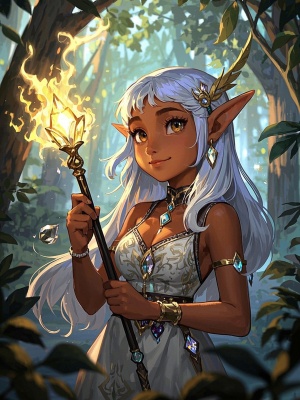How to Draw a Portrait: A Comprehensive Guide for Beginners and Professionals
Introduction
Drawing a portrait is one of the most rewarding yet challenging artistic endeavors. Capturing the likeness and personality of a subject requires a combination of technical skill, observation, and creativity. Whether you're a beginner or an experienced artist looking to refine your portrait drawing techniques, this guide will provide you with essential steps and professional insights.
If you're interested in exploring digital alternatives, check out our AI Painting Guide for innovative approaches to portrait creation.

Essential Materials for Portrait Drawing
Choosing the Right Tools
The foundation of any great portrait begins with quality materials. While you can start with basic tools, investing in professional-grade materials will significantly improve your results.
- Graphite pencils (ranging from 2H to 8B)
- Quality drawing paper (at least 90lb weight)
- Kneaded eraser and vinyl eraser
- Blending stumps or tortillons
- Sharpener or craft knife

Understanding Facial Proportions
The Loomis Method
One of the most reliable approaches to portrait drawing is the Loomis Method, developed by illustrator Andrew Loomis. This technique breaks down the head into simple geometric forms that serve as a foundation for accurate proportions.
- Start with a circle representing the cranium
- Add a jawline to form the complete head shape
- Divide the face into equal thirds (hairline to brow, brow to nose base, nose base to chin)
- Place the eyes at the halfway point of the head
For more detailed facial studies, visit our gallery to see professional examples.

Capturing Likeness and Expression
Observation Techniques
The key to a successful portrait lies in careful observation. Professional portrait artists recommend these techniques:
- Study the unique proportions of your subject's face
- Identify the most distinctive facial features
- Pay attention to subtle asymmetries that make each face unique
- Observe how light interacts with different facial planes
Shading and Texture Techniques
Creating Depth and Realism
Mastering shading is crucial for bringing your portrait to life. Different facial features require specific shading approaches:
For skin texture, use gentle, layered strokes rather than hard lines. According to a study published in the Journal of Visual Arts Practice, gradual value transitions create the most realistic skin tones. The eyes typically require the darkest values in the portrait, while the highlights should be preserved to create a lifelike sparkle.
Common Challenges and Solutions
Problem-Solving Matrix
| Problem | Solution |
|---|---|
| Proportions look incorrect | Use measuring techniques (pencil sighting) and check alignments |
| Features appear flat | Strengthen value contrast and study the planes of the face |
| Difficulty capturing likeness | Focus on unique features and compare angles frequently |
Digital Portrait Alternatives
For those interested in digital methods, our Portrait to Art Detail guide explores how AI can assist in creating stunning portraits. While traditional skills remain fundamental, technology offers exciting new possibilities for artists.
Conclusion
Portrait drawing is a skill that develops with practice and patience. By mastering proportions, observation techniques, and shading methods, you can create compelling portraits that capture both physical likeness and emotional essence. Remember that every artist develops their unique approach - what matters most is consistent practice and a willingness to learn from each drawing.
For more artistic inspiration and techniques, explore our blog featuring articles from professional artists. Consider supplementing your traditional skills with modern tools - the combination often yields the most impressive results.